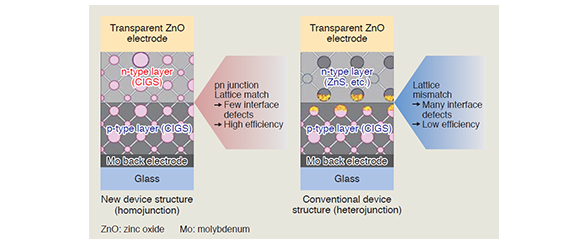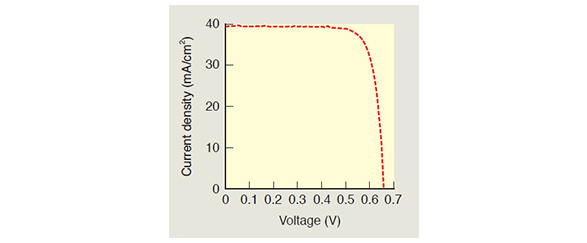- Back to the previous page
- Nano Materials & Devices
CIGS Solar Cell with World's Highest Level Energy Conversion Efficiency
Toshiba has developed a small homojunction copper indium gallium diselenide (CIGS) solar cell with the world's highest level energy conversion efficiency of 20.7%(*).
Although the conventional heterojunction CIGS solar cell, which consists of an n-type zinc sulfide (ZnS) layer on top of a p-type CIGS layer, can be manufactured at lower cost and with less usage of resources, its efficiency is insufficient because it tends to have a high interface defect density due to lattice mismatch at the heterojunction interface.
To solve this problem, we have used our original liquid-phase doping technique to create a homojunction CIGS pn junction structure with few interface defects. In this technique, a thin CIGS film is dipped into a liquid containing a dissolved n-type dopant in order to form an n-type region on top of the p-type CIGS layer.
Our next step will be to improve the homojunction technology so as to realize a CIGS solar cell with even higher efficiency (25%, equivalent to that of a single-crystal silicon (Si) solar cell).

New device structure of high-efficiency CIGS solar cell

Newly developed CIGS solar cell

Current density-voltage characteristics
(*) As of September 2013 (as researched by Toshiba)


